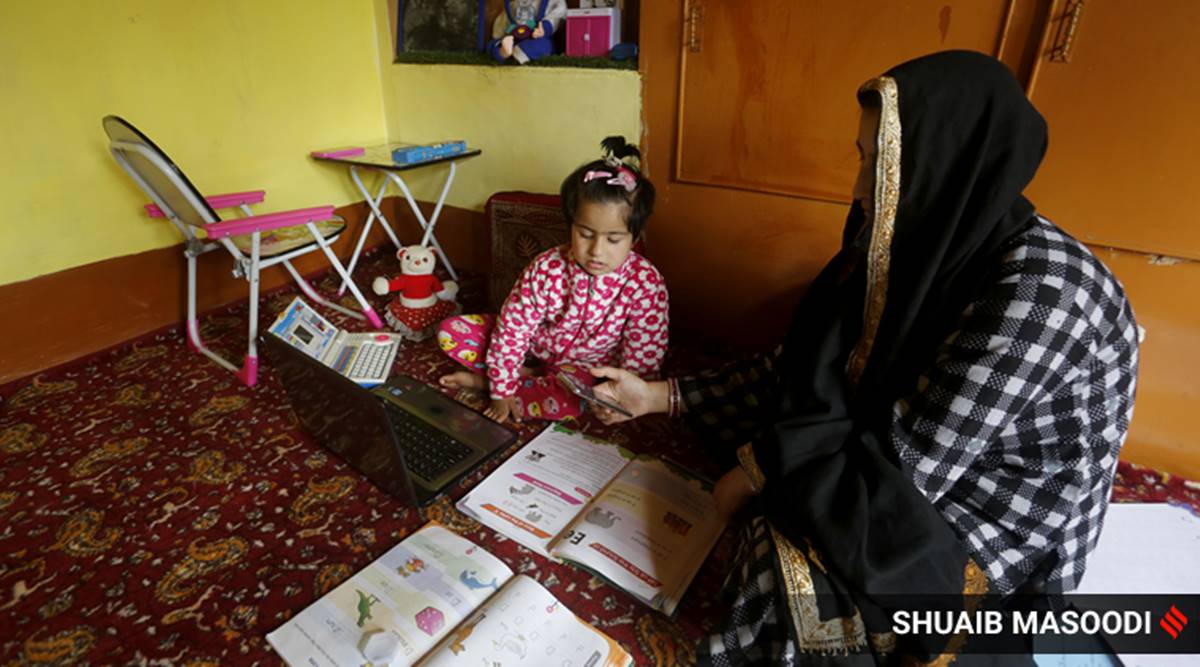 Classes are being held online since schools are shut (Express Photo by Shuaib Masoodi)
Classes are being held online since schools are shut (Express Photo by Shuaib Masoodi)WhatsApp and Zoom calls are the most preferred medium of students (59 per cent) who are taking their classes online, followed by 30 per cent of students using their school’s or college’s online platform to attend online classes, according to India Lockdown Learning’ report by scholarship management portal Vidyasaarathi.
While online classes are part of the new normal, 75 per cent of the students still prefer physical classrooms over online learning, according to the report. Poor internet connection was highlighted by 57 per cent of students as their biggest challenge for e-learning. An additional 31 per cent of students found it difficult to focus and 12 per cent finding it difficult to get doubts clarified while studying online, as per the report.
Among students who are accessing the online classes, a vast majority of students (79 per cent) use smartphones followed by 17 per cent of students attend their online classes using laptops and computers and rest 4 per cent students attend it through mediums such as tablets, according to India Lockdown Learning’ report.
Moreover, among the total number of students who are utilising online classes, 62 per cent of them are using it for curricular and 38 per cent for extra-curricular activities. Amongst the extra-curricular activities, 39 per cent are taking online courses on art and craft. This indicates a shift from traditional learning methods.
The majority of the students who took the survey were in the age groups of 12 to 28 years where 62 per cent were males. The respondents are in their undergraduate and postgraduate courses. They come from middle-class families, with around 90 per cent of students belonging to families with annual incomes below Rs 7 lakh.